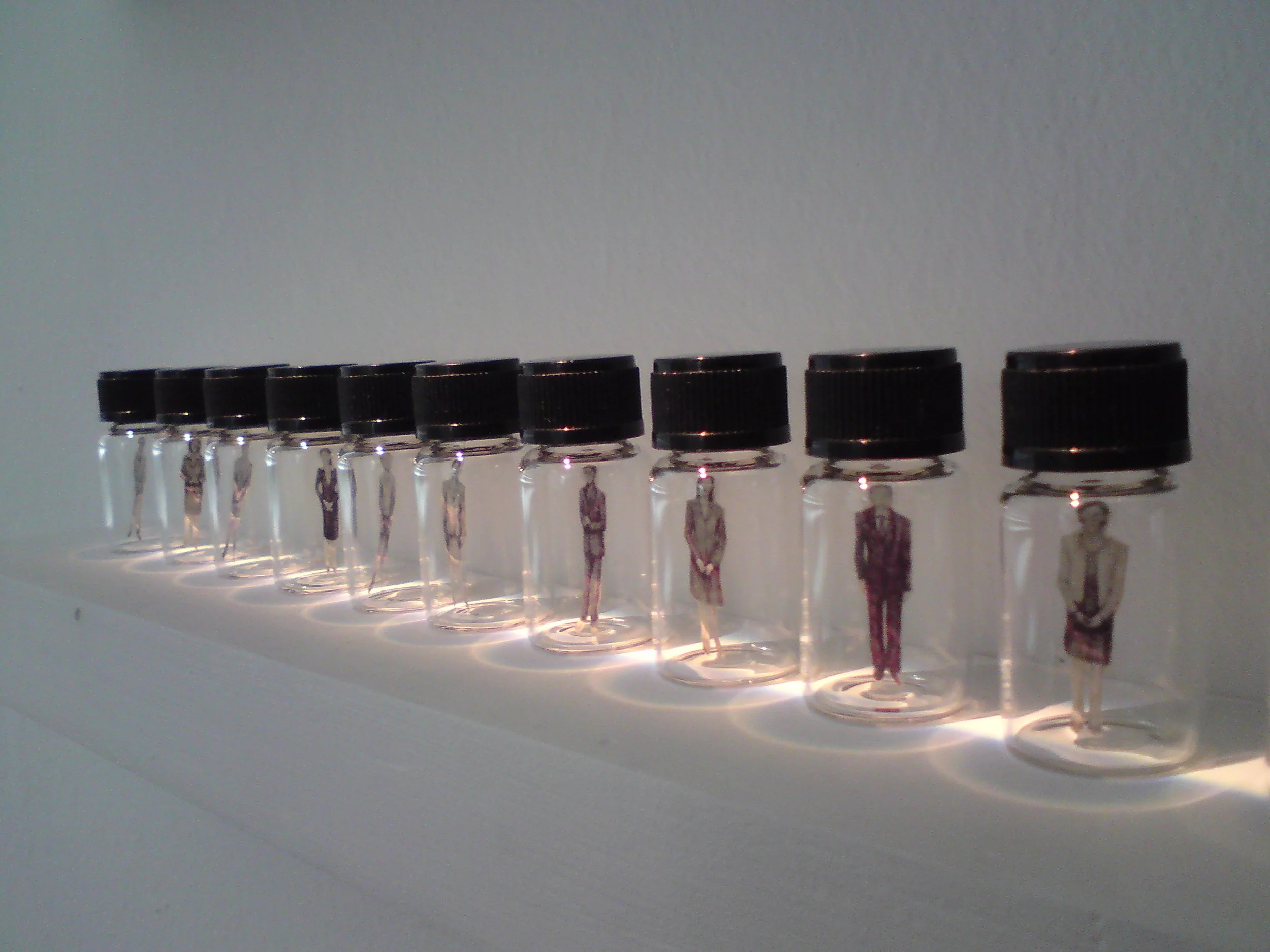



The Specimen Bottle Series, 2008, Mixed media installation
Evident from the LASALLE College of the Arts building, transparency has increasingly become a characteristic of contemporary architecture. As an extremely private person, I need a lot of personal space. Exposed or open working areas prove to be daunting to me. Hence, it became the motivating force to find out the issues pertaining to the gaze facilitated by architectural transparency.
The term transparency is positive, affirmative. Clearly defined in the dictionary as ''clear,'' ''without guile or concealment.'', there seems no doubt about being transparent. The modernists have regarded it as an ethical triumph, a utopian universal virtue, embodying values such as truth, honesty and accountability. Even up till today, this symbolism is still reiterated in Reichstag, Berlin’s transparent cupola in 1999.
However, I would like to put across that transparency in contemporary architecture is no longer one that symbolizes the truth and honesty but takes on a more complex, diverse meaning of public and private, scrutiny, voyeurism and surveillance.
The use of glass as an architectural material is not dissimilar to Jeremy Bentham’s idea of panopticon. Of which, Michel Foucault did a detailed analysis of and theorized the society of surveillance. The invisible eye purportedly helps keep people vigilant and on their toes, for they constantly believe that they are being watched. As such, what is being presented can be distorted or glazed over, especially when the gaze is noticed. And if that is the case, where is the truth, honesty or accountability when transparency itself can significantly alter the outcome?